120
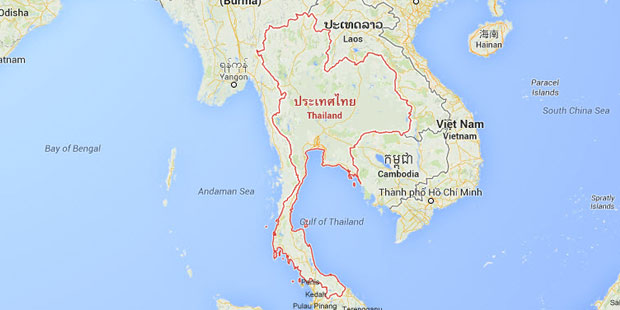
Thailand, long form the Kingdom of Thailand, Thai Pratet Thai, Thai ประเทศไทย and Ratcha Anachak, ราช อาณาจักร ไทย, is a country in Southeast Asia, whose territory covers 514,000 square kilometers. Before 1939, it was called the Kingdom of Siam. It is bordered to the west by Burma, south by Malaysia, on the east by Cambodia and northeast by Laos. This is a constitutional monarchy since 1932. Its capital is Bangkok (Krungthep – กรุงเทพฯ, the City of Angels). The official language is Thai baht currency.
King Rama IX, the ninth of the Chakri dynasty ruled the country since 1946, record of longevity at the head of the country in Thai history. constitutional monarch, the king is officially titled names Head of State, Head of the Armed Forces, a supporter of the Buddhist religion, and defender of all faiths. The country ranks 51st country by area (513,000 km ²) and the 19th most populous country in the world with 66,720,153 people around. About 75% of the population is ethnic Thai, 14% are Chinese, Malay and 3%, the rest being made up of minority groups: the Mon, Khmer and various hill tribes. The main religion is Buddhism, practiced by about 95% of Thais. Thailand has experienced rapid economic growth between 1985 and 1995.
This is a newly industrialized countries, particularly through tourism, with well-known tourist destinations such as the park of Ayutthaya, the seaside resort of Pattaya, the capital Bangkok, Phuket Province, the coastal town of Krabi and the Ko Samui island. Exports also contribute significantly to the economy. There are about 2.2 million legal and illegal migrants in Thailand, plus a number of expatriates from developed countries.
History
Many kingdoms, principalities and empires divide the country into a nested story, invasions and foreign rule continued until the late seventeenth century. Chronological summary:
- First to the sixth century the kingdom known by its Chinese name Funan dominates the region
- Third to the fifth century, a kingdom known as the Chinese Dun-sun (south)
- Sixth to the eleventh century Mon kingdom of Dvaravati (center)
- Seventh century, relations with the Kingdom of Sriwijaya (South)
- Eighth century to the thirteenth century Mon kingdom of Haripunjaya (north)
- Eleventh and twelfth centuries, Khmer invasions
- Thirteenth century, Thai kingdom of Sukhothai (center) until 1438.
- Thirteenth to seventeenth-century Thai kingdom of Lan Na (north)
- Fourteenth-century – eighteenth century, the Kingdom of Ayutthaya (center)
- Eighteenth century to the present day Chakri dynasty in Bangkok (or Krungthep in Thai).
- 1939: The country changed its name to Thailand
Geography
Thailand is part of the Indochinese peninsula, to the Isthmus of Kra, which marks the transition to the Malay Peninsula. The country extends about 805 km from east to west and 1,770 km from north to south.
In the center there is a vast plain, the alluvial plain of the Chao Phraya River, the largest river in Thailand. This is the area most dense in population and the richest agricultural point of view.
Bangkok is located near the fertile delta of the Maenam Chao Phraya River (Mae Nam – แม่ น้ำ – literally mother-water (water of life mother), means river or stream in Thai). All around this basin amounts of mountain ranges. Clumps along the Burmese border are the highest peaks, rising to 2595 meters Doi Inthanon. As for the peninsular region, bordered by narrow coastal plains, it peaked at Khao Luang to 1786 m.Card by the CIA World Factbook
To the east of the basin of the Chao Phraya, there is another mountain range, north-south axis, which rises to 1270 meters Doi Pia Fai through.
A low plateau, arid stretches north and east of this chain: the Khorat Plateau, which occupies the eastern third of the country (known as Isan) and borders the Mekong (Mae Nam Khong ), on the border with Laos.
Policy
On September 19, 2006, while Prime Minister Thaksin Shinawatra was in New York, on the occasion of the UN General Assembly, the army seized power. Less than a week after taking power, the army said the “general state of emergency.” Therefore, it found itself applied to the whole country and not just the three Muslim provinces in the south. Tanks surrounded government offices in Bangkok and the military took control of television, before announcing the establishment of a provisional authority loyal to the King of Thailand. The deposed Prime Minister Thaksin Shinawatra took refuge in London, where he owns a second home. Surayud Chulanont, a former commander of the army, was in fact invested as Prime Minister by the King of Thailand. If the government has only two former soldiers, twenty-six ministers is under the absolute control of the General Staff.
The provisional government has submitted to a referendum a draft constitution undemocratic to limit the power of elected officials in favor of the army. Approved up to 56.69%, it led to the parliamentary elections for December 23, 2007 after which the People Power Party (PPP), resulting from the Thai Rak Thai Thaksin won 232 seats out of 480 to the disappointment of the coup. Samak Sundaravej, leader of the PPP, was elected prime minister by the deputies (against the leader Abhisit Vejjajiva of the Democrat Party supported by the generals), formed a government. Since December 18, 2008, a government dominated by the Democratic Party and supported by the general was appointed by Parliament with Abhisit Vejjajiva as prime minister.
In July 2011, the little sister of Thaksin Shinawatra, was elected with an overwhelming majority. She is the first woman who has become Prime Minister in Thailand. She graduated with a degree in political science and earned a master of public administration at a university in the United States.
Provinces
The country is divided administratively into 76 provinces (jangwat – จังหวัด, singular and plural), divided into five groups. The name of each province is derived from the name of its capital.
It is only by virtue of the Anglo-Siamese 1909 that the ancient kingdom of Pattani became part of the Kingdom of Siam, in the form of four new provinces, Pattani, Yala, Narathiwat and Satun.
Conflict in Southern Thailand
The southern provinces, the ancient kingdom of Pattani, are predominantly Muslim and shaken by separatist and sectarian violence since the 1970s. Between January 2004 and June 2009, these tensions were 3700 deaths. 87 Muslims died Oct. 25, 2004 after a demonstration in the province of Narathiwat (“Tak Bai massacre”). Six months earlier, during the shooting of the mosque of Krue Se, 32 “rebels” were killed by security forces. In retaliation, a Buddhist was beheaded.
On July 19, 2005, the Thai government imposed a state of emergency in the south to restore security: the “rebels” throwing petrol bombs at public buildings and monks are murdered. On February 18, 2007, a series of bombings and fires killed four people and wounded 49 in the southern provinces.
On October 25, 2011, a series of attacks have left three dead and several dozen injured in the city of Yala.
Economy
Thailand is a member of the Asia Pacific Economic Cooperation (APEC).
Agriculture, processing and export of agricultural products, including rice, have formed the backbone of its economy. Although among the most prosperous countries in Asia, that it depends on a single crop made it extremely sensitive to fluctuations in world prices of rice and to variations in production. The Thai government has attempted to mitigate this vulnerability by seeking to diversify the economy and promote scientific farming methods such as controlled irrigation of rice fields in order to stabilize output even when rainfall is insufficient. Shrimp farms are a major source of exports. Thailand has well over 30 000 farms providing an output of 280 000 tonnes in 2006. These exports generate revenues of $ 2 billion and mostly held to Europe, Japan and the United States.
Japanese investors in Thailand, giving rapid industrialization in the 1980s and 1990s.From the mid-1980s, tourism was a major role in economic development. Annual growth was outstanding between 1985 and 1993 (from about 10%). She was still 8% in 1993, when GDP was 136.9 billion dollars. Japan, the United States, Germany, Malaysia, China and the Netherlands are major trading partners of Thailand. Thai families of Chinese descent control most of the country’s economic sectors.
After the tsunami in late 2004 that affected the entire southwestern coast, tourists have deserted the scene, leaving traders Thai bloodless. Most of the dead were foreigners in this sector. Prices have fallen in Koh Lanta (for example) by almost 50%. Thailand has other tourist resources and returns this year with a disaster of this tourism growth over 10% from 2005 after the fall and cancellations caused by the tsunami.
Since 2001, the Gross Domestic Product (GDP) of Thailand registered growth rates of particular support: 6.9% in 2003, 6.1% in 2004 and 4.5% in 2005. GDP growth forecast for 2006 is about 5%. The dynamism of the Thai economy is based on robust domestic demand (consumption and private investment), which makes it less sensitive than some of its neighbors in fits and starts in global demand. This good performance has enabled the kingdom to establish itself as regional economic power.
The export industry is still the second economic powerhouse of the country: Thailand is particularly competitive in the food industry, tourism and certain electronic activities, she also attracts many multinational companies that use their Thai subsidiary as a regional export base, even global. However, the high level of Thai imports of raw materials is expected to weigh on economic growth in 2005, partly because of rising oil prices.
With a fine control of its economic policy, the government has contributed significantly to current performance. Using a strategy called “dual track” (double track), the government adjusts its support according to the international situation: in downturns, government spending support consumption, and during a more favorable, the rate of spending decreases and the government can address the more structural reforms. This policy is made possible by the remarkable situation of public finances: the broadening of the tax base combined with the natural increase of income (due to market conditions) will allow the government to end the budget deficit in 2003. However, to mitigate the impact of the slowdown in 2005, the authorities launched a vast program of public investment to modernize the infrastructure of the deep country. Besides a positive effect on growth, these projects will naturally create many business opportunities.
Culture
The culture of Thailand is deeply imbued with Theravada Buddhism, the official religion and practiced by most of the population (4% Muslim and less than 1% of Christians).Much of the arts – painting, sculpture, architecture, dance and music – experiences that influence and serves traditional representations of Buddhism and its derivatives.According to the teachings of Buddha, the monks practicing asceticism. Every morning they get their food from residents and traders to 6 am (even in the capital metropolis, Bangkok – Krung Thep in Thai).
There is also a great continuity of animistic beliefs. They manifest themselves in the belief in magical amulets and in the domestic worship rendered to the “spirit of place” (chao thi), which are dedicated houses of spirits, small shrines at present houses or shops (where possible) and thank the Thais or pray every day if they can by offerings (garlands of flowers and food).
In Thailand, it is called “cultural” rather than “culture”, namely: Buddhist culture, secular culture and traditional Muslim culture. Muslims living in the south on the peninsula, near the border with Malaysia, in the three provinces of Pattani, Yala and Narathiwat.
Originally, the Thais would have come from southern China (Yunnan Province) from the eleventh century. However, the Thai language has no relationship to the Chinese. It belongs to the branch known as tai-tai kam family-Kadai language pillowcases.
Buddhist culture and traditional Thailand includes complete and includes basically two types of cultures: the culture in the Lao provinces of North-East and North (formerly called “Lanna-Lao” and “Lanna-Thai”), and Thai culture itself (known as Siamese). When the power moved to Bangkok in 1782, after the destruction of Ayutthaya by the Burmese in 1767, the Siamese leaders appeal to artists and craftsmen to build the Lao town itself.The Emerald Buddha temple “Wat Prakao” (pronounced “Wadding Prakeo”) in Bangkok was built by them, taken by force by the Siamese, after the sack of Vientiane (Lao capital of the Kingdom) by the Siamese army to 1778.
The Northeast or Isan, is inhabited by people close to the Lao, the so-called “Thai Isan”.They have a distinct culture (now strongly influenced by the Thai TV), because this territory was part of the Lao kingdom of Lan Xang, before the arrival of the French in 1893.Permanently annexed by Siam in the 1900s, after the Franco-Siamese Treaty of October 3, 1893, this area became known as Isan (“Northeast”) to 1907-1910. Since then, the Lao Northeast or “Lao Isan” lose their ethnic identity, now under the name “Thai Isan” (food Nissan is very specific to the region and now sought after and recognized throughout Thailand), speaking Lao and still struggle to preserve their culture. In the 1930s, the Lao Northeast were oppressed by the powers that be (in P. Pribun-Sangkhrama): they were not allowed to speak Lao, chewing betel, wearing skirts for Lao women, etc..
Health
The Thai constitution guarantees access to health care to every citizen in various fields. She noted that the State must provide a public health service to the people, so the indicators were created to measure the average coverage of services.
In 2002, his ninth national development plan of health, the State is committed to ensuring that all citizens of Thailand for good health. This policy aims not only to treat disease, but also to reach marginalized populations such as urban poor, undocumented immigrants, etc … A law passed in 2002, provides for the development of a national fund of insurance.
Tourisme
Longer restricted to the seaside tourism to the beaches of the peninsula, Thailand wishes to develop cultural trips and attract tourists to the northern provinces, rich in archaeological remains.
Among the monuments of the provinces are:
The temple with three towers. The Prang Sam Yot Lopburi is a fine example of Khmer art of the twelfth century.
The palace of Ayuthia. The royal palace of Bang Pa-In the nineteenth century renovated by Rama IV, was his vacation home.
The sanctuary of Chiangmai. Built in 1345, Wat Phra Sing housed the ashes of the great King Kham Fu.
Prasat Hin Phimai. The Khmer temple was built in the late eleventh century.
Related Infos
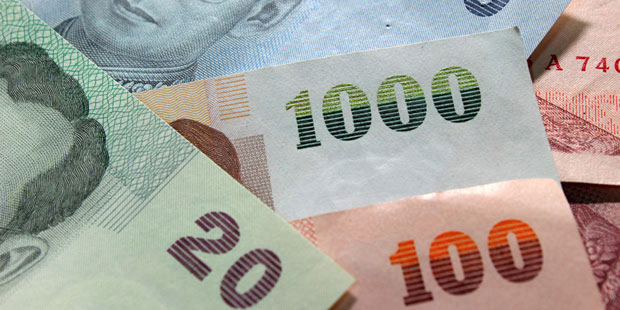
Koh Samui Change
The baht (Thai: บาท, sign: ฿; code: THB) is the currency of Thailand. It is subdivided into 100 satang (สตางค์). The issuance of currency is the responsibility of the Bank of Thailand. Currency change daily updated: CURRENCY TO BATH FROM BATH Euro US Dollar Japanese Yen Bulgarian Lev Czech Republic Koruna Danish Krone British Pound […]
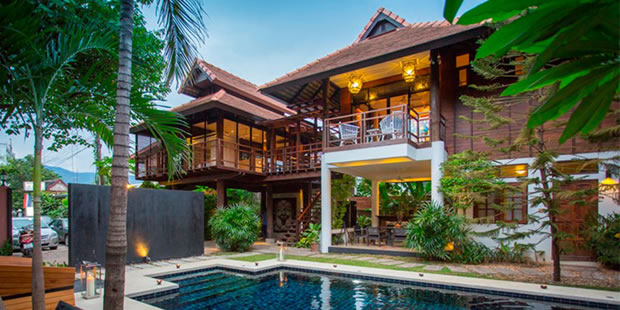
Access to the property for a foreign
The ownership of land in Thailand is regulated by the “Land Code” ( the cadastre code ) exactly the article ” BE 2497 , 1954″ , by the Civil and Commercial Code , the reform on agricultural land of 1975 ( Act BE 2518 ) , and the Thai Ministry of the Interior . These […]
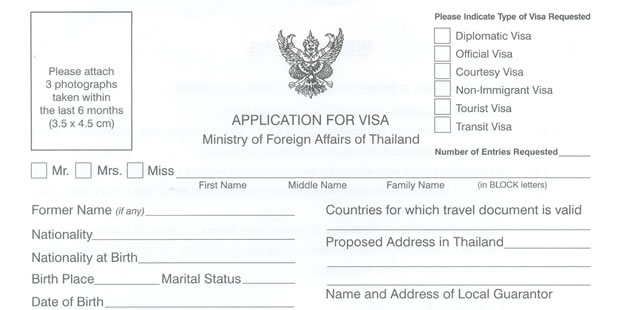
Non-immigrant visa category O-A
The non-immigrant visa category OA (long stay) are issued to foreigners who are over 50 years and who want to stay in Thailand for a period of one year or those who want to join their spouses of Thai nationality. This visa is issued by the Thai Embassies or Consulates. 1 – Obligations – Do […]
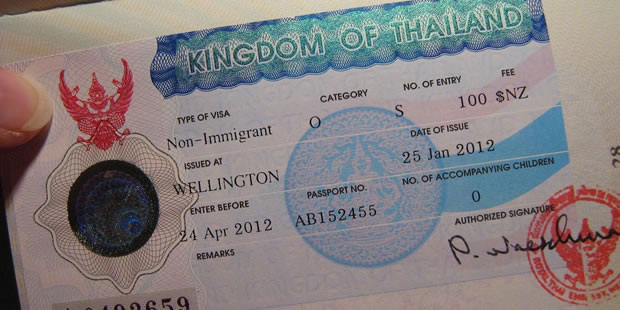
Non-immigrant visa category O
This category of visa is for foreigners who want to stay in Thailand for a period of 90 days. It is issued by the Thai Embassies or Consulates. Foreigners can obtain this visa: – Minor, one of whose parents is a citizen of Thailand – Abroad whose spouse is of Thai nationality – Abroad in […]